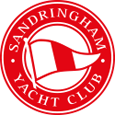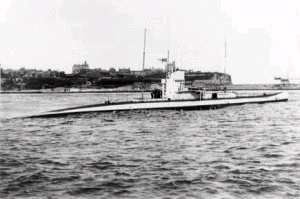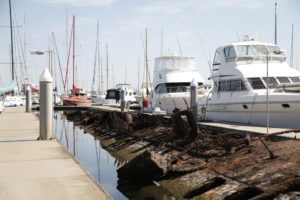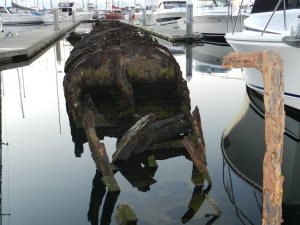For more than 80 years few have known that a former 274 foot (83 metre) British World War 1 submarine known as J7 has sat in the waters as a breakwater at Sandringham Yacht Club, with its rusting upper hull providing moored boats with protection from the Bay’s strong winds and waves.
Despite a world class marina these days all but engulfing the 1700 tonne sunken hulk, thousands of sailors regularly stroll past it enroute to their boats, barely giving a thought about the dramatic World War 1 North Sea naval battles it played part in over 95 years ago.
The J class Submarine Number 7. Built Devonport Dee completed 11/1917. In that time the J class were the fastest subs in existence. Number 7 was the last J to be built.
The J class of submarines was a 7 submarine class developed by the Royal Navy prior to the First World War in response to claims that Germany was developing submarines that were fast enough (22knts) to operate alongside surface fleets. The rumours were actually false. Six were completed during mid-1916, while a seventh entered service at the end of 1917.
Although larger and more powerful than previous British submarines, the J class could not keep up with surface vessels, and operated independently during the war. Between them, the submarines sank a U-boat, and heavily damaged two battleships, with the loss of one to friendly shelling. They were equipped with a powerful long-range wireless they were ideally suited to reconnoiter in enemy water.
Following the war, the six surviving submarines were gifted to the Royal Australian Navy. When they arrived in Australia, they were all in poor condition. The boats were not refitted in England before being handed over and sailing to Australia, and had to undergo extensive refits. They were immediately refitted (from 1920) at the Garden and Cockatoo Island Commonwealth Naval Dockyards at a total cost of £407,000. The last one to be refitted was the J7 in June 1922.
It is a little ironic that the other naval relic near SYC, the ironclad Cerberus (renamed Platypus II on the 1/4/1921) acted as a depot ship to the J Class submarines whilst they were stationed at Geelong.
Four subs, J1, J2, J4, and J5, were scuttled in the ship graveyard 4 kilometers W-SW of the Heads. Two were scuttled as breakwaters. J3 near Swan Island and our J7 at SYC.
The conning tower of J4 was erected on St.Kilda pier as a starting tower for the club until 1956 when the old pier was demolished.
One of the Vickers Diesel engines of the submarines is located at Radio Australia Shepparton and in 2004 was still functional.
The decision to scrap the J7 came on the 16/l/1924 even though it was in fairly good condition after just being refitted. It was described as the last survivor of an obsolete class.
She stayed in service for the longest period providing electricity for the Flinders Naval Depot. (The J3 also served this purpose prior to scuttling).
The J7’s engines were later removed and continued to provide secondary lighting, and were still to be seen as late as 1972. She was towed from Cowes where she had been lying at anchor, to Melbourne by the tug Minah and broken up at Footscray. The J7 was sold to Morris and Watts Machinery Merchant in October 1929, who after dismantling it sold it to the Ports and Harbors Department Melbourne and sunk her as a breakwater at Sandringham Yacht Club in August 1930.
| Name: | J class submarine |
| Operators: | United KingdomAustralia |
| Commission: | 1916-1930 |
| Planned: | 8 |
| Completed: | 7 |
| Cancelled: | 1 |
| Lost: | 1 |
| Scrapped: | 6 |
|
General characteristics (original design) |
|
| Type: | Submarine |
| Displacement: | 1,210 tons (surfaced)1,760 tons (submerged) |
| Length: | 274 ft. (84 m)100 feet longer than the previous class |
| Beam: | 23 ft. 1 in (7.04 m) |
| Draught: | 14 ft. (4.3 m) |
| Propulsion: | Three shaftsSurfaced – 3 x 12 cylinder diesel engines (3,600 hip)Submerged – 2 x battery driven electric motors (1,350 hp) |
| Speed: | 19.5 knots (35 km/h) (surfaced)9.5 knots (17.6 km/h) (submerged) |
| Range: | 91 tons Diesel Oil for 5,000 nautical miles (9,000 km) at 12.5 knots (23 km/h) |
| Test depth: | 300 feet (91 m) |
| Complement | 5 officers, 40 seamen |
| Armament: | 6 x 18-inch (457 mm) torpedo tubes (4 bow, 2 beam) 1 x 4-inch (102 mm) gun |
For further information click in the links below




